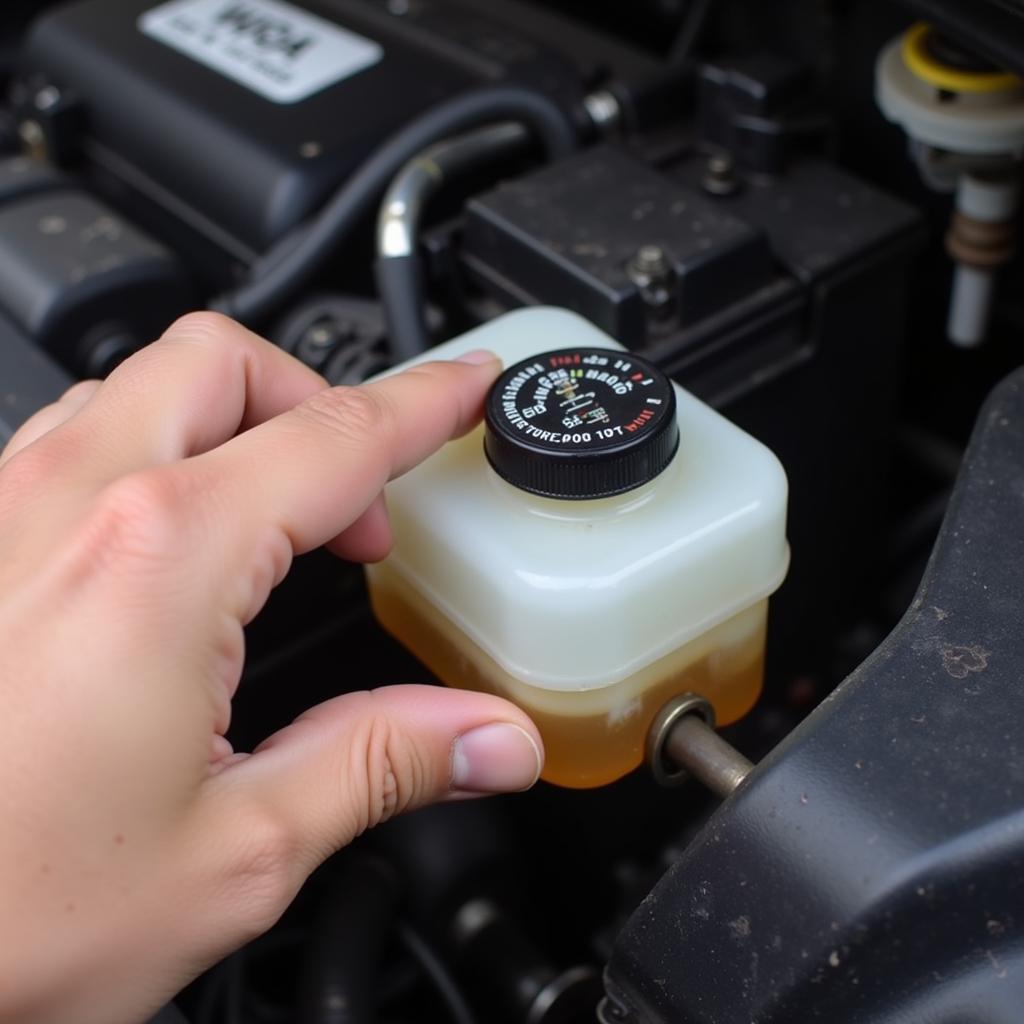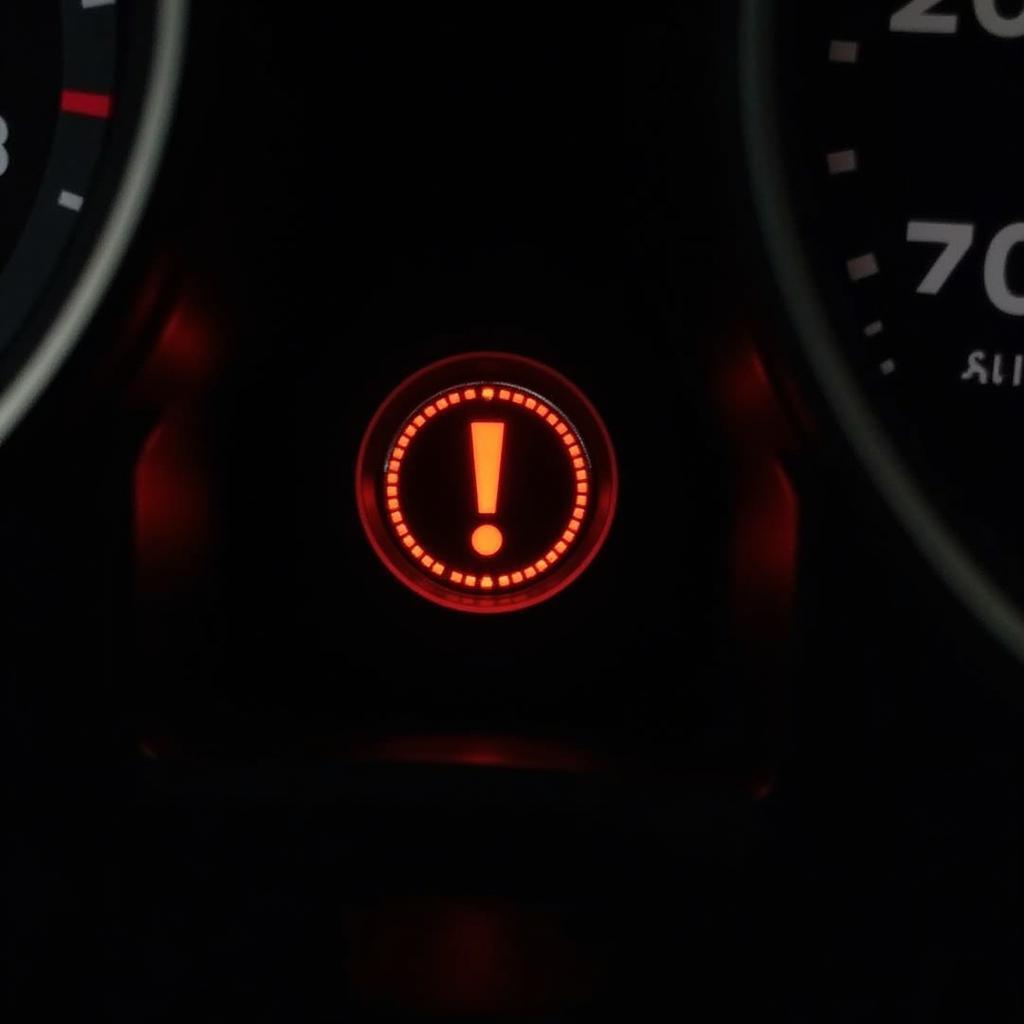The brake warning light on your 1999 Honda Civic dashboard is designed to grab your attention if there’s a problem with your braking system. Ignoring it could compromise your safety and lead to costly repairs. This comprehensive guide delves into the common reasons why your 1999 Honda Civic’s brake warning light might be on and provides a step-by-step approach to troubleshooting and fixing the issue.
Understanding Your Honda Civic’s Brake Warning Light
The brake warning light, often symbolized by an exclamation mark within a circle or parentheses, illuminates for various reasons. While some are minor and easily addressed, others can indicate serious problems demanding immediate attention.
Common Causes of a 1999 Honda Civic Brake Warning Light
Here are the most frequent culprits behind that glowing brake warning light in your 1999 Honda Civic:
-
Low Brake Fluid Level: This is the most common reason for the warning light. Brake fluid is the lifeblood of your car’s hydraulic braking system. A leak in the system or worn-out brake pads can cause the fluid level to drop, triggering the warning light.
-
Worn Brake Pads: Your brake pads naturally wear down over time. When they become too thin, a sensor inside the brake pad makes contact, completing a circuit and illuminating the warning light.
-
Faulty Brake Light Switch: This switch activates your brake lights when you press the pedal. If it malfunctions, it can disrupt the signal to the brake warning light system.
-
ABS Problem: If your 1999 Honda Civic is equipped with Anti-lock Braking System (ABS), a problem with this system can also trigger the warning light. This could be due to a faulty sensor or issue with the ABS control module.
-
Parking Brake Engaged: Sometimes, the simplest answer is the right one. If your parking brake isn’t fully released, it can trigger the brake warning light.
 Checking the Brake Fluid Level in a 1999 Honda Civic
Checking the Brake Fluid Level in a 1999 Honda Civic
How to Troubleshoot a 1999 Honda Civic Brake Warning Light
Here’s a step-by-step guide to help you diagnose the problem:
-
Check the Parking Brake: Start with the easiest check. Make sure your parking brake is fully disengaged. If it is and the light remains on, move to the next step.
-
Inspect the Brake Fluid Level: Locate the brake fluid reservoir under the hood. It’s a translucent plastic container with markings for “Min” and “Max.” If the fluid level is below the “Min” mark, it needs to be topped up. However, simply adding brake fluid won’t fix the underlying issue if there’s a leak.
-
Inspect Brake Pads: If you’re comfortable with basic car maintenance, you can check the thickness of your brake pads. If they look thin or you notice a grinding noise when braking, it’s time for a replacement.
-
Check for Visible Leaks: Look for signs of brake fluid leaks around the wheels, brake lines, and near the master cylinder. Brake fluid is typically clear to amber in color and has a slightly oily texture.
Expert Insight from John Miller, ASE Certified Master Technician: “Never ignore a brake fluid leak. It’s a serious safety concern that needs immediate attention from a qualified mechanic.”
-
Consider Your Driving: Have you noticed any changes in how your car brakes? Does the brake pedal feel spongy or go closer to the floor than usual? These could indicate air in the brake lines, a failing master cylinder, or other serious problems.
When to Seek Professional Help
If you’re uncomfortable performing these checks yourself, or if you’ve ruled out the simple fixes and the warning light persists, it’s crucial to take your 1999 Honda Civic to a trusted mechanic.
> **Expert Insight from Sarah Chen, Automotive Engineer:** “Diagnosing complex brake problems requires specialized tools and expertise. Attempting DIY repairs without proper knowledge can exacerbate the issue and compromise your safety.”Preventative Maintenance for Your Honda Civic’s Brakes
Regular maintenance is key to preventing brake issues and ensuring their longevity. Here are some preventative measures:
-
Regular Brake Fluid Flushes: Honda recommends flushing your brake fluid every 2 years or 30,000 miles, whichever comes first.
-
Timely Brake Pad Replacements: Don’t wait for the warning light to come on before replacing your brake pads. Consult your owner’s manual for recommended replacement intervals or have them inspected by a mechanic during regular maintenance.
-
Inspect Brake Lines: Have your brake lines inspected for wear and tear during oil changes or other routine maintenance.
Conclusion
A glowing brake warning light in your 1999 Honda Civic should never be ignored. By understanding the common causes and following the troubleshooting steps outlined in this guide, you can identify the issue and determine the best course of action. Remember, when it comes to brakes, erring on the side of caution and seeking professional help is always the safest approach.

